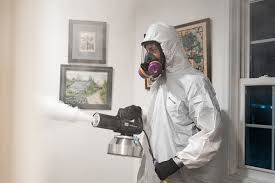It is a sensitive and highly specialized process that requires more than just basic cleaning. One of the most challenging aspects is odor removal for decomposition cleanup, as the smell associated with biological decomposition is extremely potent and persistent. This guide will walk you through the best practices, tools, and methods to effectively remove these odors, ensuring a safe and clean environment.
Understanding Decomposition Odors
When a human or animal body begins to decompose, it releases a mixture of gases such as hydrogen sulfide, ammonia, and methane. These compounds produce the characteristic strong, pungent odor often associated with death or severe decay. If not addressed properly, these odors can linger for weeks, penetrate surfaces, and affect indoor air quality.
Why Professional Cleanup is Essential
Decomposition cleanup is not just a matter of odor control; it is also a biohazard concern. Bodily fluids and decomposed tissues can carry pathogens, bacteria, and viruses. Professional cleanup ensures:
-
Safe removal of contaminated materials.
-
Proper disinfection of affected areas.
-
Effective neutralization of odors at the source.
Step-by-Step Guide to Odor Removal
1. Safety First
Before tackling decomposition odors, always prioritize safety:
-
Wear protective gear: gloves, masks, goggles, and disposable suits.
-
Ensure proper ventilation of the area.
-
Use biohazard disposal bags for contaminated materials.
2. Remove Contaminated Materials
Soft materials like carpets, upholstery, mattresses, or linens absorb decomposition odors. These often need professional cleaning or disposal. Hard surfaces, however, can be cleaned and disinfected.
3. Clean and Disinfect
After removing waste, clean all surfaces using a hospital-grade disinfectant. Focus on:
-
Floors, walls, and ceilings near the affected area.
-
HVAC vents and air ducts.
-
Porous surfaces where fluids may have seeped in.
4. Odor Neutralization Techniques
Merely cleaning does not always remove lingering odors. Effective methods include:
-
Ozone Treatment: Ozone generators break down odor-causing molecules. They are highly effective but must be used by trained professionals due to health risks.
-
Thermal Fogging: Creates a fog of deodorizing chemicals that penetrate porous surfaces to neutralize odors.
-
Enzymatic Cleaners: These break down organic matter at a molecular level, eliminating odor rather than masking it.
-
Activated Charcoal & Baking Soda: Natural absorbers that can be used in less severe situations.
5. Ventilation and Air Purification
After cleaning, ensure continuous ventilation to remove airborne odors:
-
Use HEPA air purifiers to trap odor particles and microbes.
-
Open windows and doors to allow airflow.
-
Keep the area dry to prevent mold growth, which can worsen odors.
6. Long-Term Prevention
Even after professional cleanup, odors can sometimes return. Preventive measures include:
-
Regularly cleaning and disinfecting high-risk areas.
-
Inspecting for hidden moisture or stains.
-
Using air purifiers and odor absorbers routinely.
When to Call a Professional
Decomposition cleanup is complex and potentially hazardous. Call professionals if:
-
The odor is extremely strong and persistent.
-
Contaminated materials are extensive.
-
You suspect biohazard risk or exposure to pathogens.
Professional services not only remove odors effectively but also provide peace of mind that the cleanup is thorough and safe.
Conclusion
Decomposition odors are some of the most difficult to remove, but with proper techniques, equipment, and professional guidance, a safe and odor-free environment is achievable. Always prioritize safety, use effective neutralization methods, and consult experts for severe situations.
FAQs: Decomposition Odor Removal & Cleanup
1. What causes decomposition odors?
Decomposition odors are caused by the breakdown of organic matter, releasing gases like hydrogen sulfide, ammonia, and methane, which produce a strong, unpleasant smell.
2. Can I remove decomposition odors myself?
Minor odors might be temporarily masked with household cleaners, but full removal requires professional cleaning and odor-neutralizing techniques to ensure safety and effectiveness.
3. Are decomposition odors dangerous?
Yes. Beyond being unpleasant, decomposition odors indicate the presence of bacteria and other pathogens. Proper biohazard cleanup is essential to prevent health risks.
4. How long does it take to remove decomposition odors?
The timeline depends on the severity and size of the affected area. Professional services typically complete the process within 24–72 hours using specialized equipment and chemicals.
5. What methods are used for odor removal?
Common methods include ozone treatment, thermal fogging, enzymatic cleaners, activated charcoal, and thorough ventilation combined with professional cleaning.
6. Do decomposition odors return after cleaning?
If cleanup is thorough and all contaminated materials are removed, odors usually do not return. Hidden moisture or porous materials left untreated can cause a return of odors.
7. Is decomposition cleanup safe for my home?
Yes, when performed by trained professionals using protective equipment and biohazard protocols, the cleanup is safe and prevents contamination.
8. Can furniture or carpets be saved?
Porous materials like carpets, upholstery, and mattresses often absorb odors and may need professional cleaning or disposal. Non-porous surfaces can typically be sanitized.
9. How much does professional decomposition odor removal cost?
Costs vary depending on the severity, area size, and methods required. Contact a professional cleanup service for a personalized estimate.
10. How can I prevent decomposition odors in the future?
Regular cleaning, proper waste disposal, and moisture control help prevent lingering odors. In high-risk situations, professional odor-neutralizing treatments can provide long-term results.

